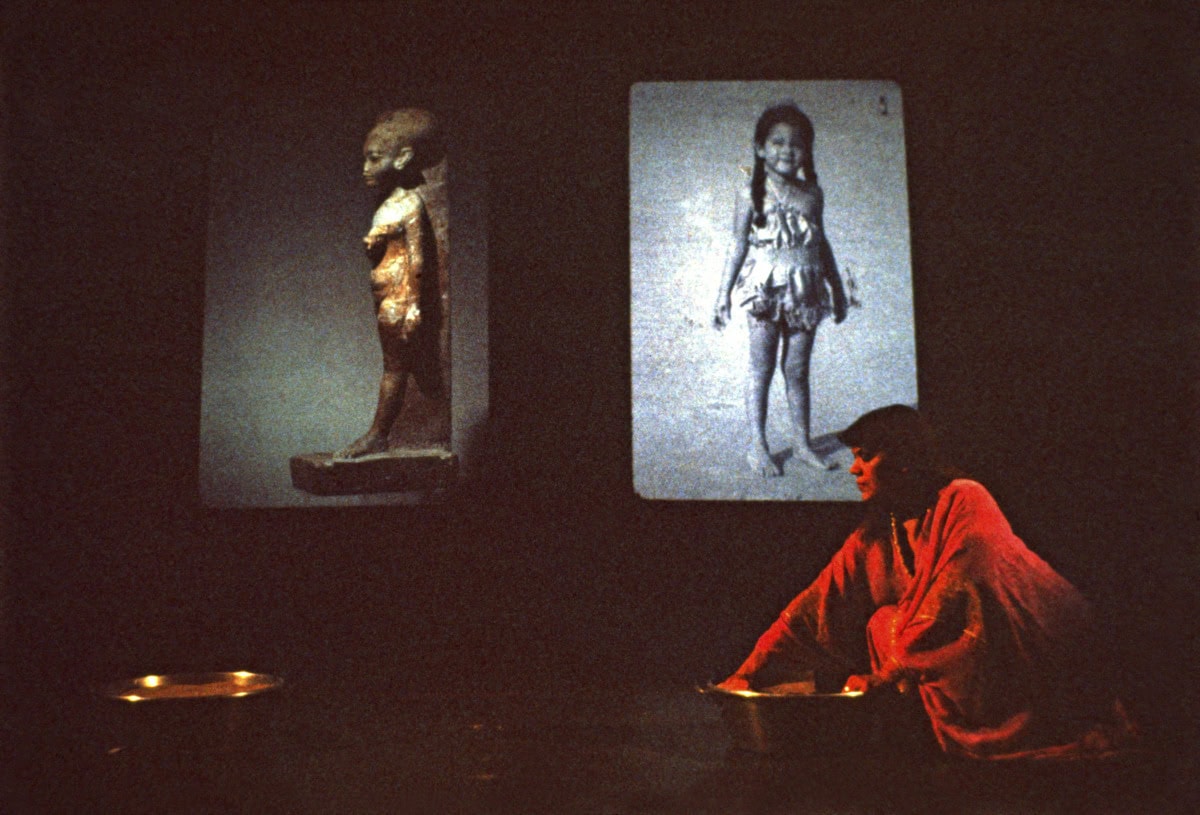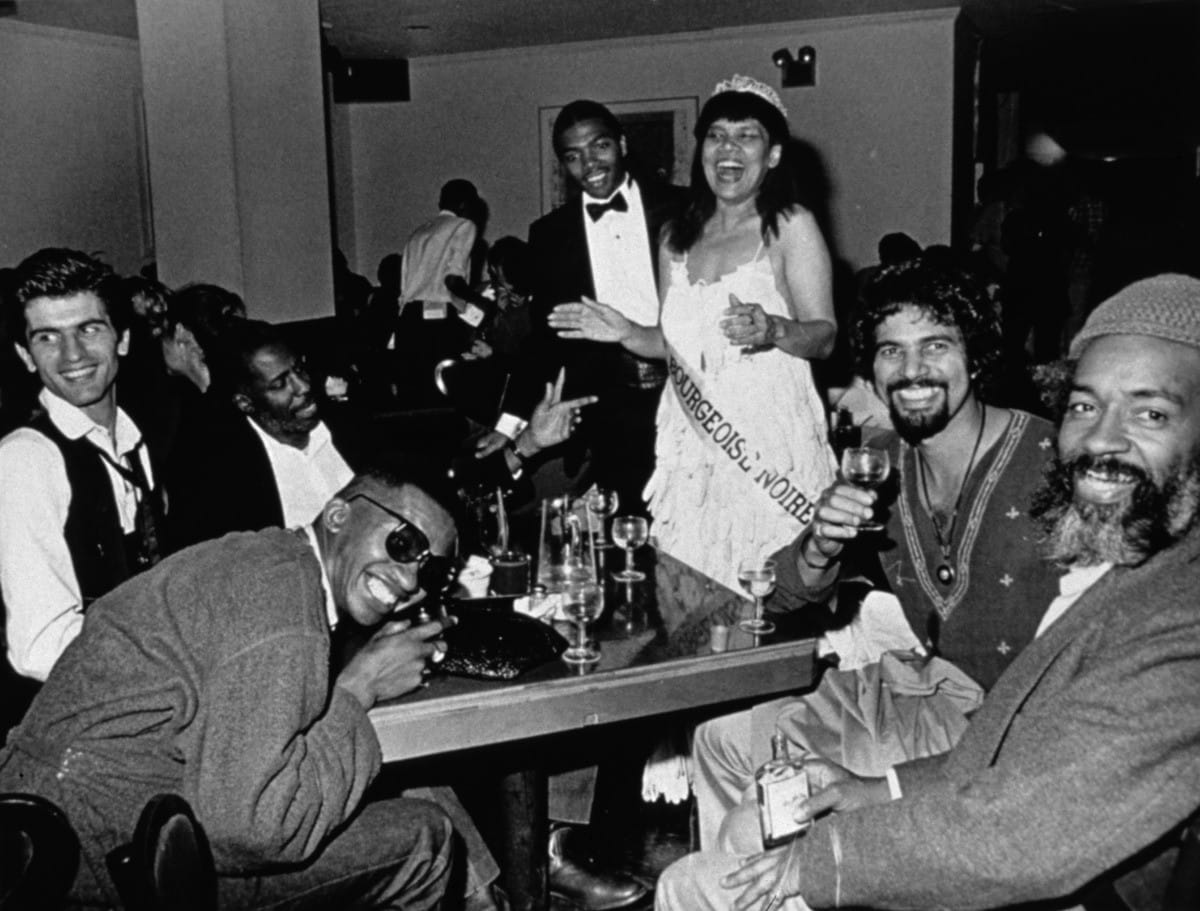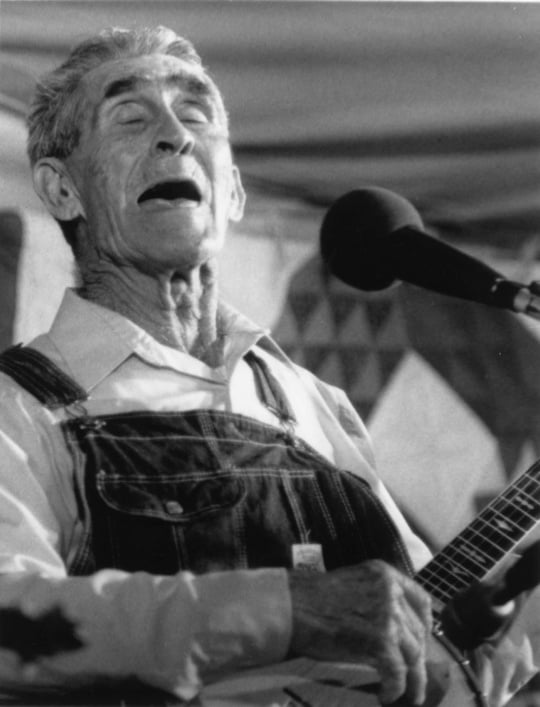
Both/And, the first comprehensive retrospective of Lorraine O’Grady’s work, highlights new possibilities of broader racial understanding. On loan from the Brooklyn Museum, and currently on view at the Weatherspoon Art Museum at UNC Greensboro, Both/And is an exploration of O’Grady’s oeuvre that conveys forty years of Black feminist conceptual expression. In an artist statement dated June 15, 1995, O’Grady describes the Both/And methodology as, “an alternative to the hierarchical, ‘either/or’ binaries of Western culture.” The show includes some of the artist’s earliest works such as Cutting Out the New York Times (1977), a poem series featuring headline cutouts from The New York Times. O’Grady’s art practice reflects Black diasporic existence and serves as a reminder that contemporary art’s exclusionary past still reverberate in art spaces collecting and exhibiting today.

Lorraine O’Grady was born in 1934, the second daughter of Jamaican parents. She was raised in Roxbury, a neighborhood in Boston, Massachusetts that became known as the center of Boston’s Black community during the Great Migration. She began her art career at the age of forty-five after earning a degree in Economics and Spanish Literature at Wellesley College. Through poetry she approached conceptual art practices in the late 1970s. By 1980 O’Grady expanded her practice to include performance pieces with the works Mlle Bourgeoise Noire (1980) and Nefertiti/Devonia Evangeline (1980). Her career quickly grew in recognition as she expanded her practice with new media, photography, and videography. O’Grady’s work has been featured in several acclaimed group shows including the 2010 Whitney Biennial, 2012 Paris Triennale, and the 2015 show EN MAS’: Carnival and Performance Art of the Caribbean. Throughout her career O’Grady utilized feminist critique, focusing on Black female subjectivity, Black diasporic realities, along with a cheeky wit against “art world” bourgeoise and exclusionary traditions, forcing audiences to ponder the juxtapositions within Black existence.

Working outside the framework of chronological narration, Both/And introduces audiences to O’Grady’s retrospective with the performance and photograph series Rivers, First Draft, or The Woman in Red (1982/2015). The series, spanning a third of the formal exhibition space, chronicles a surrealist and dreamlike investigation of O’Grady’s life as an Afro-Caribbean feminist artist trying to make it in the art market. Punctuated, with motherly ethereal observation from photos such as The Woman in White eats coconut and looks away from the action, the viewer can see the title figure face moments of inspiration and ostracization as she enacts her creative spirit. The theme of Black female abjection in both the artistic society and the larger social world echoes throughout the exhibition, making this first display a linchpin for viewers to continuously draw back to while viewing the exhibition.
The exhibition centers O’Grady’s infamous performances Mlle Bourgeoise Noire (1980)and Art Is (1982). In a mutually physical and metaphysical way, the exhibition invokes the confrontational nature of O’Grady’s performances as a centralizing theme. In Mlle Bourgeoise Noire,the artist can be seen dressed as a debutant, crashing functions at Just Above Midtown, a prominent Black art gallery, and the New Museum, a predominately white institution. Remarking on the lack of Black woman artists in these spaces, O’Grady makes a defying stance against their exclusionary practices. Art Is uses a similar confrontational method, situating the 1983 Afro-American Day Parade in Harlem as a living artwork. Utilizing elaborate gold frames, O’Grady captures the festive cityscape in urban vignettes and casts parade spectators as formal art models. In this central exhibit of works, the title of the exhibition captures the functionality of confrontation as both a tool for critique and celebration.


The final formal exhibition space for Both/And is dedicated to a consideration of O’Grady’s earliest and most recent artworks. Returning to the conceptualist work Cutting Out the New York Times (1977)in her new Announcement of a New Persona (Performance to Come) (2020), this section offers a clear evolution of O’Grady’s oeuvre and artistic praxis, along with careful reflection on how similar themes of Black diasporic subjectivity are able to transcend time. In Cutting Out the New York Times, O’Gradyshapes text-collage poems out of New York Times headlines and Sunday Times advertisements in search of a new language to represent Black diasporic women, particularly in popular culture. Returning to Cutting Out the New York Times several decades later, O’Grady forms new poems in a demonstration of the American English language’s limitations in representing middle-class Black women. Furthermore, Announcement of a New Persona (Performance to Come) touches upon similar issues of Black women’s invisibility, using photography over spoken language as a methodology. Donning a custom suit of armor, the artist shields herself from sight, thus remarking on how Black women’s existence in Western ideologies remains shadowed, yet present.
Beyond the formal exhibition space, three smaller rooms offer viewers further examination of O’Grady’s more multimedia artworks, featuring in series: Landscape (Western Hemisphere) (2010-2012), Body is The Ground of My Experience (1991), and Miscegenated Family Album (1980/1994). Presenting herself as the main subject, O’Grady tackles themes of Black female subjectivity. In Miscegenated Family Album, for instance, O’Grady reflects on the death of her sister by transposing images from her performance piece Nefertiti/Devonia Evangeline to personal family albums. The artist links her own contemporary family to African diasporic histories, a commentary on generational ties and irreparable loss. These final installations meld histories, nature, and family into an interwoven relationship of Both/And, demonstrating the more expansive possibilities of each bond.

As I walked out of the exhibition, I noticed a comments box near the exit. Compelled to write my own, I saw one note inside the box. Someone illustrated an elaborate drawing of flames on the paper without any written text. This illustration captures an apt description of the exhibition, “Fire.” Both/And is a personal, critical, and true insight into the realities of Black womanhood and diasporic existence. It has taken so long for such an exhibition to exist.




